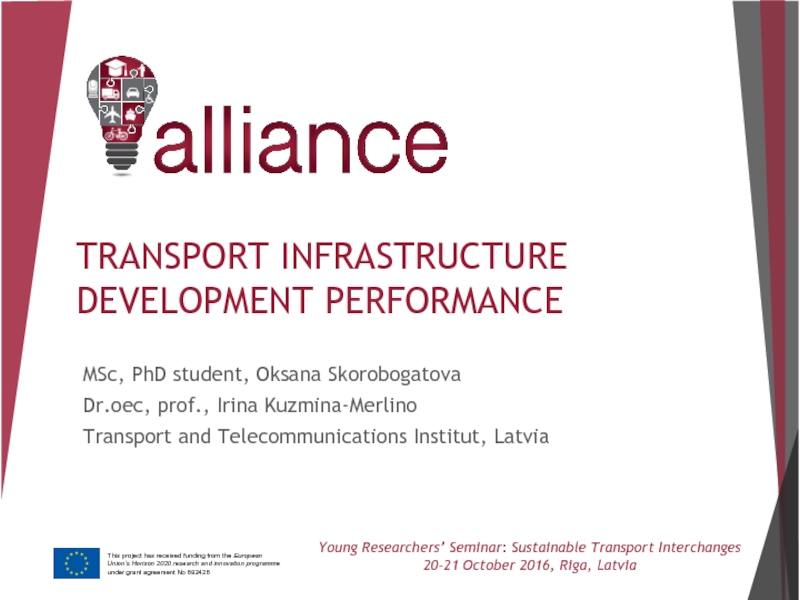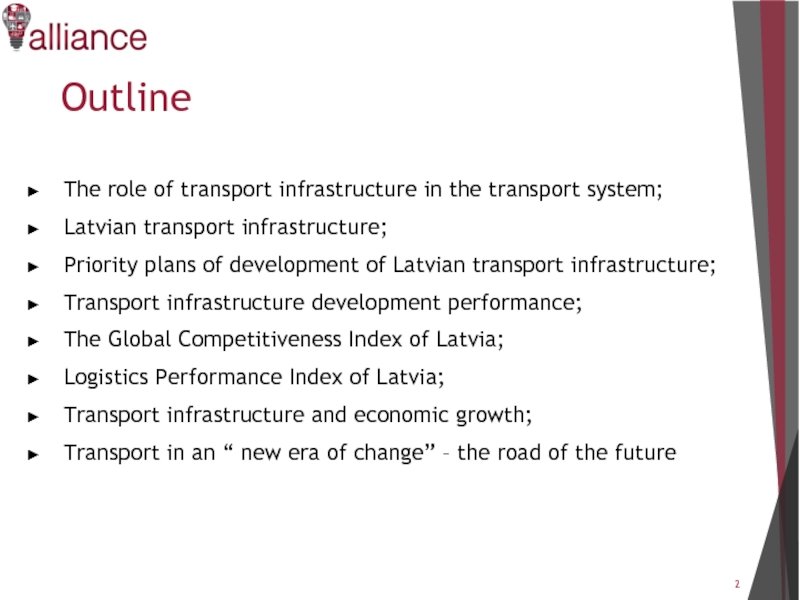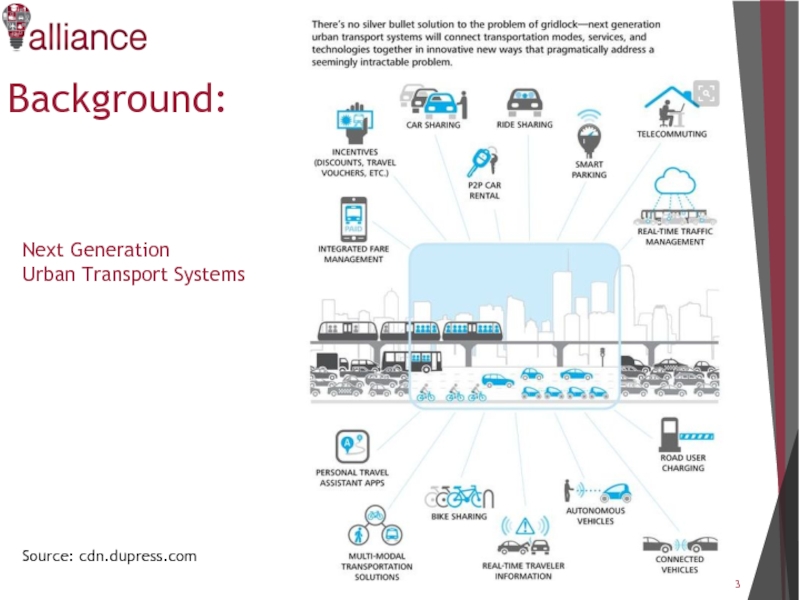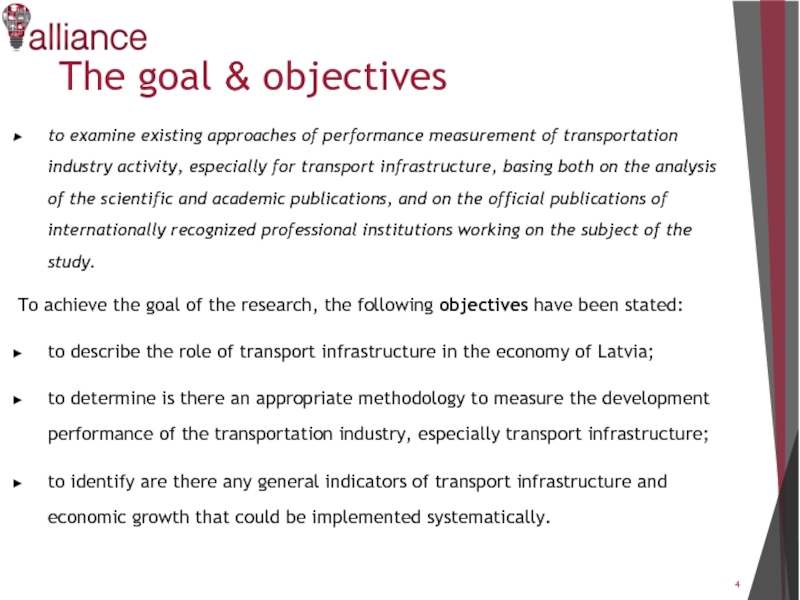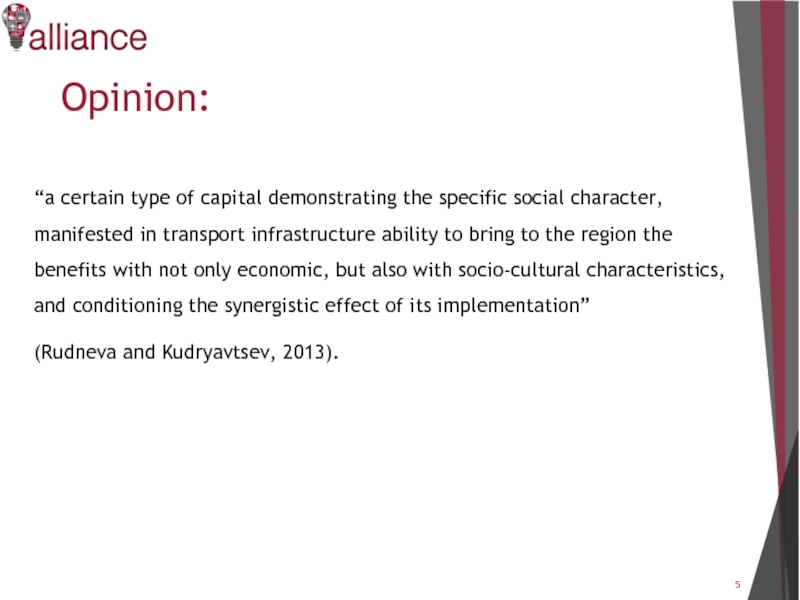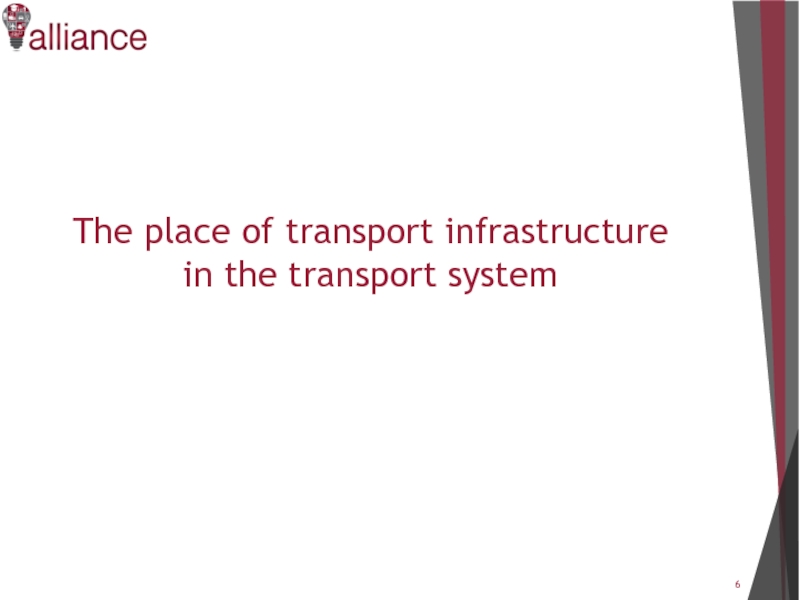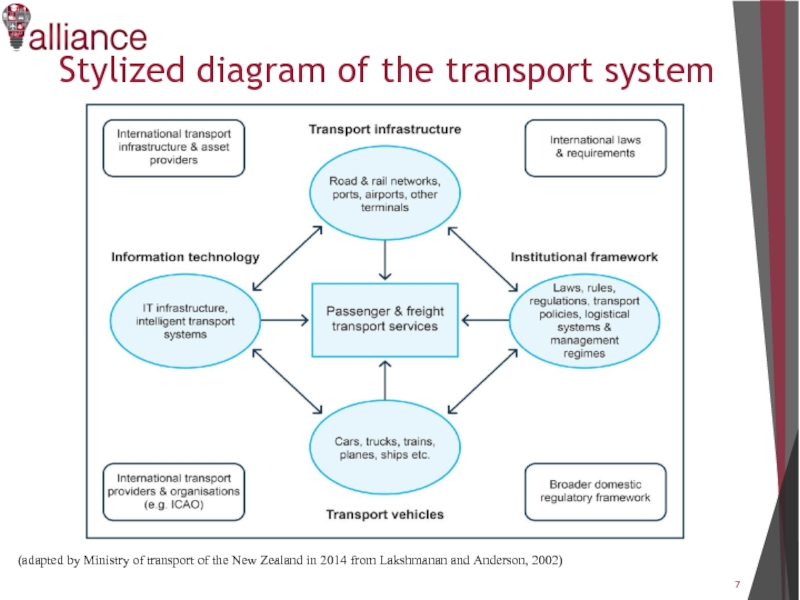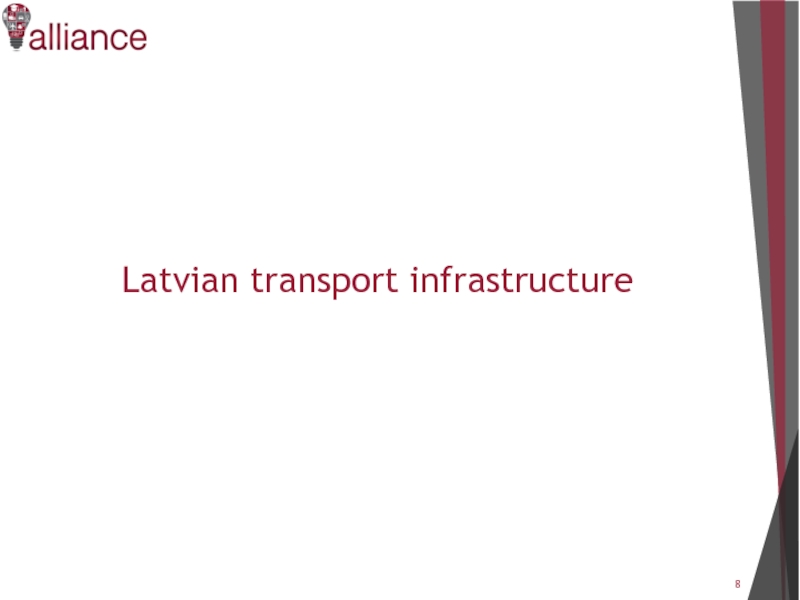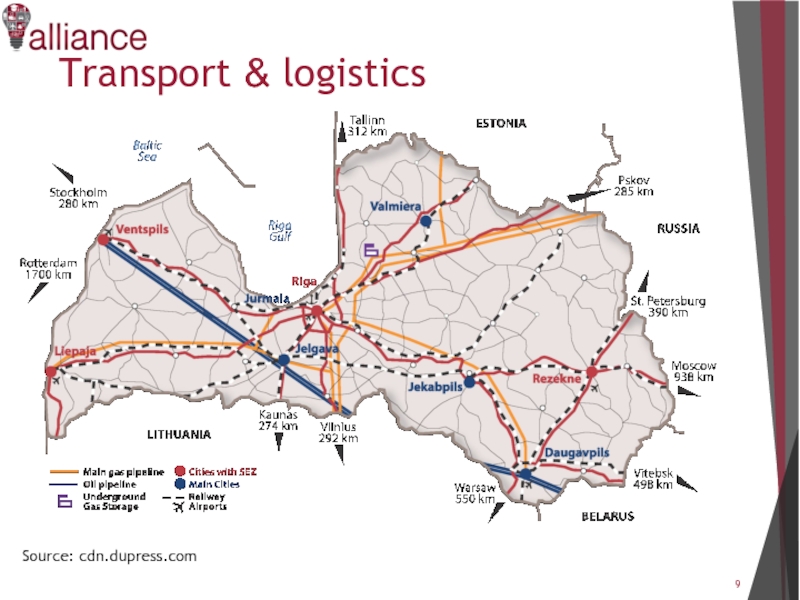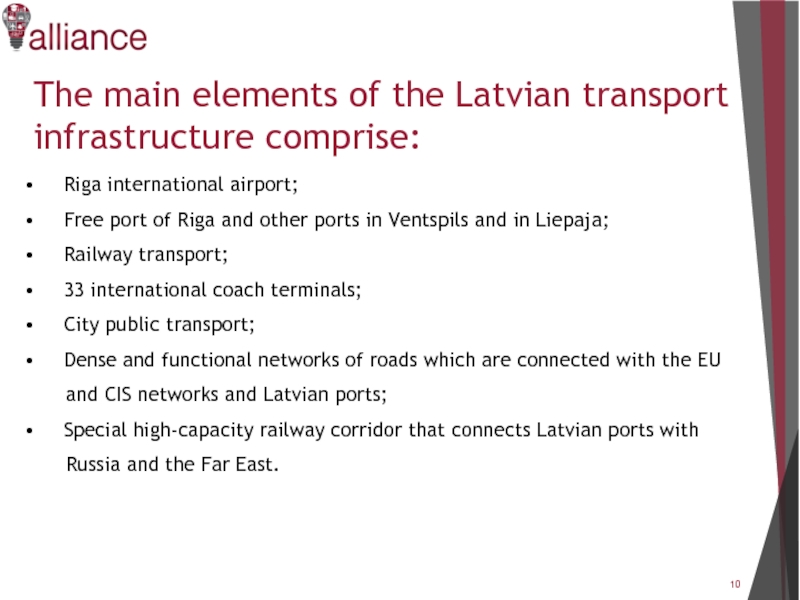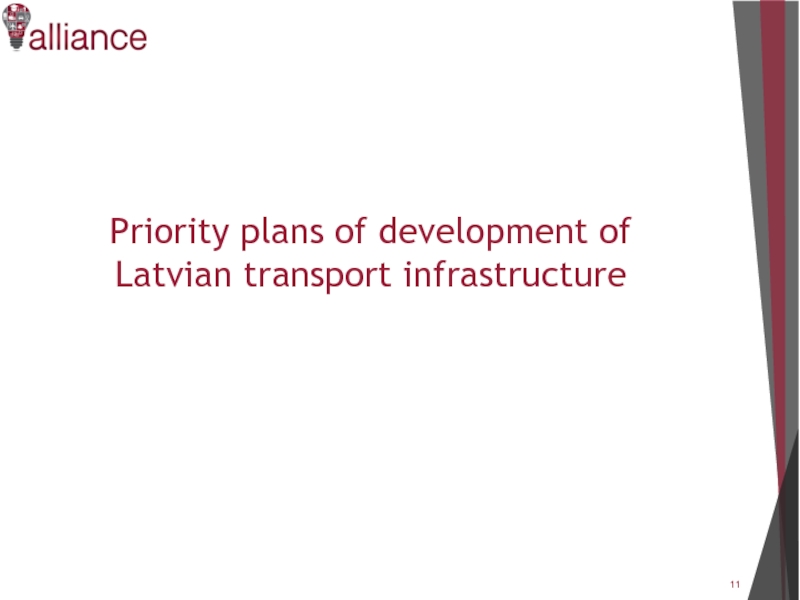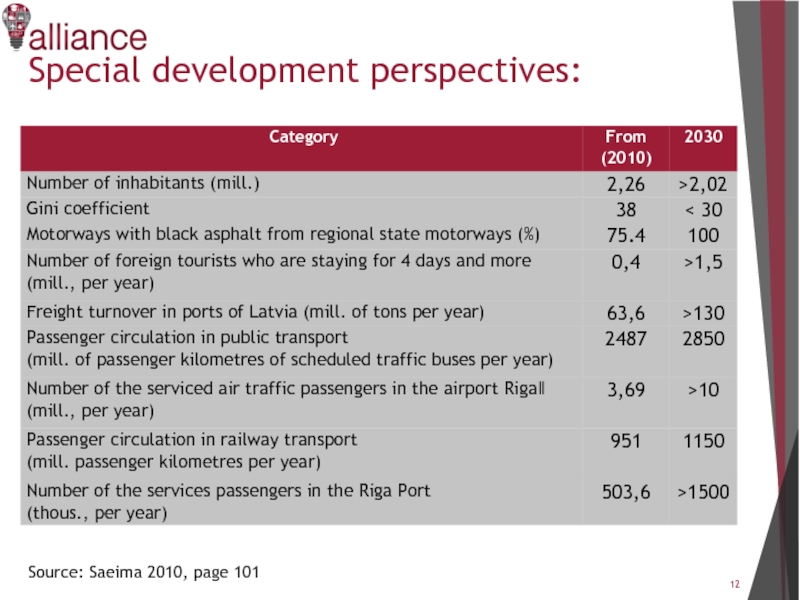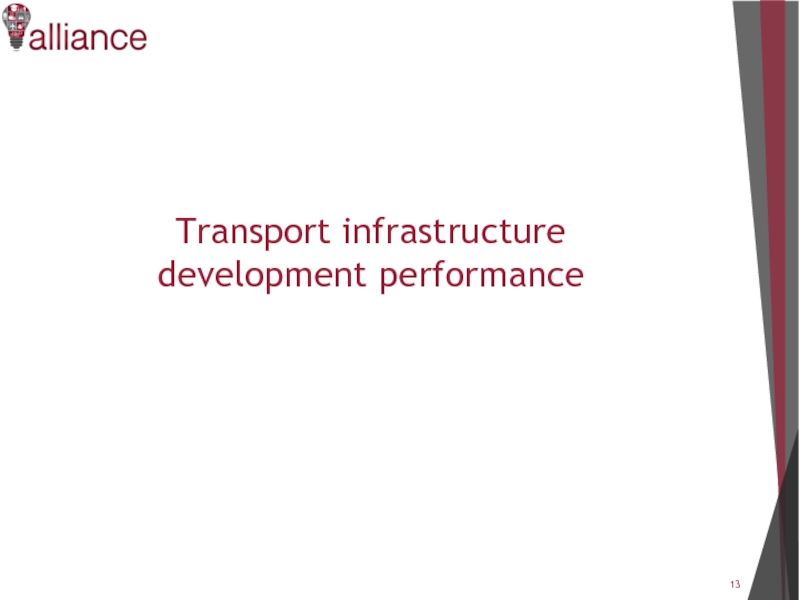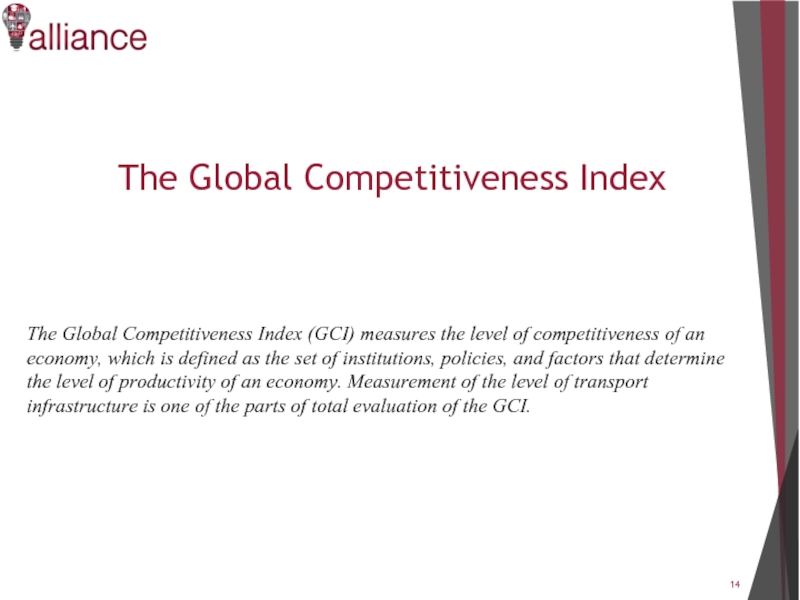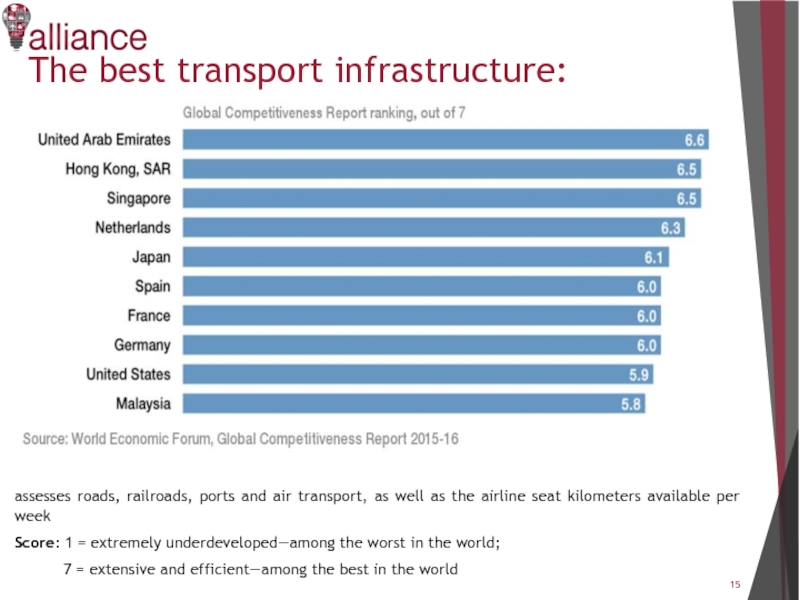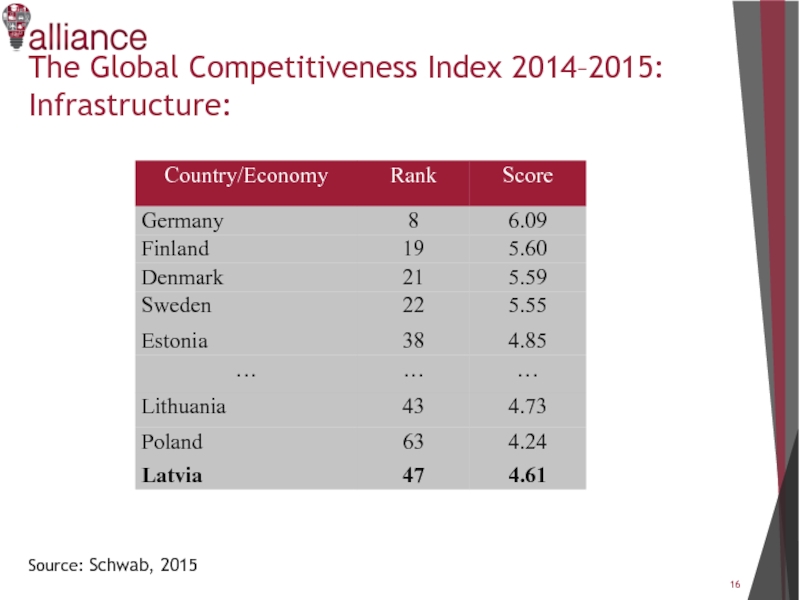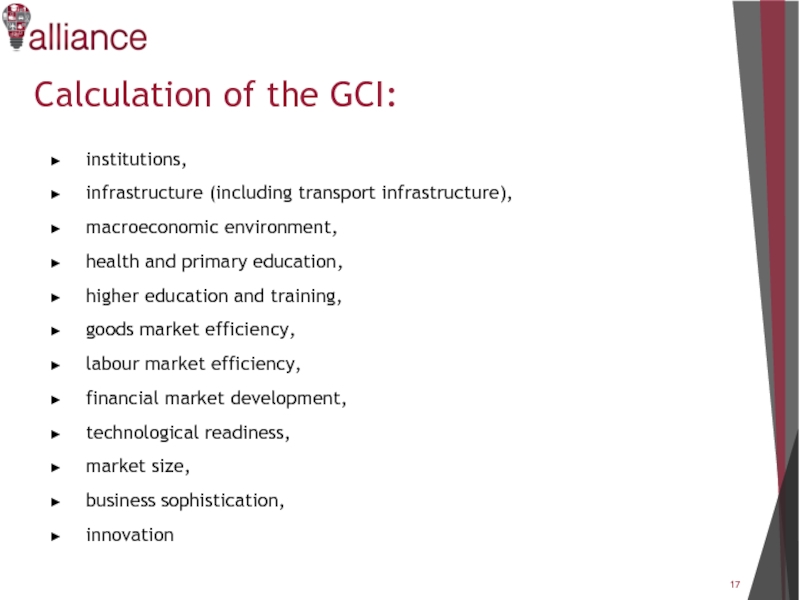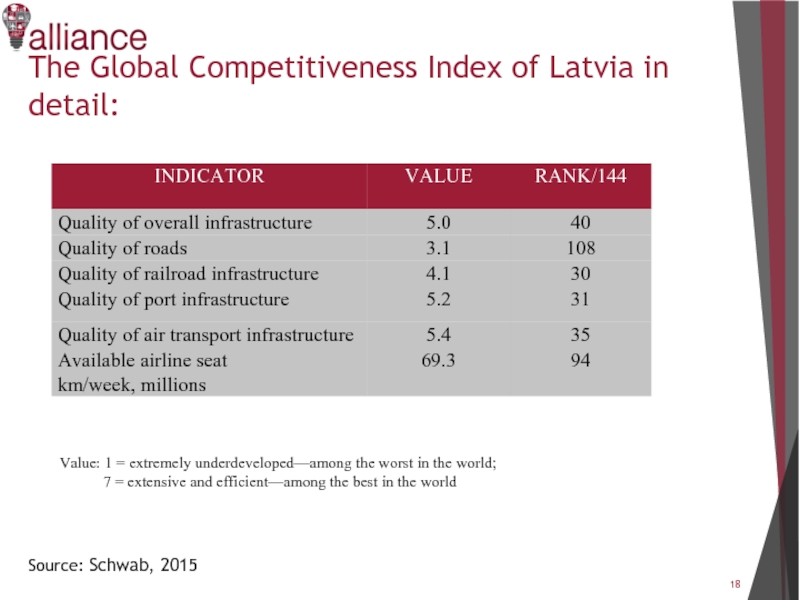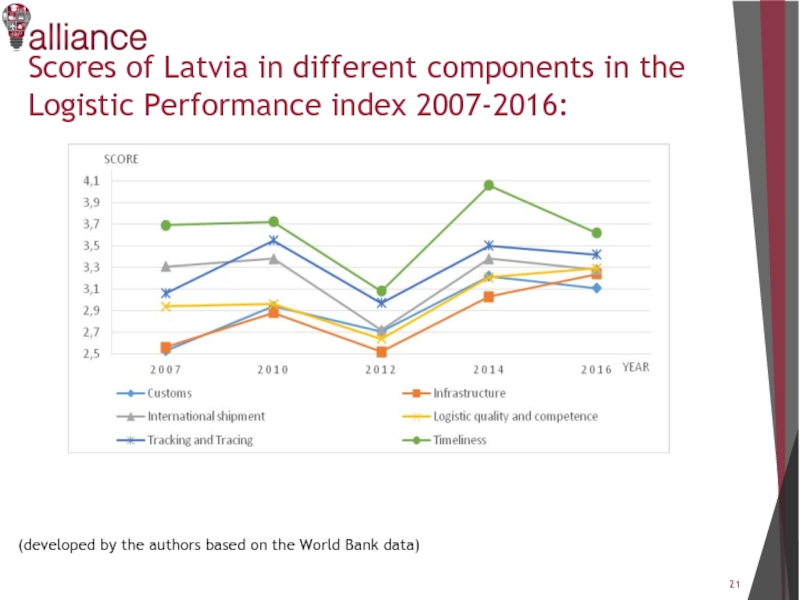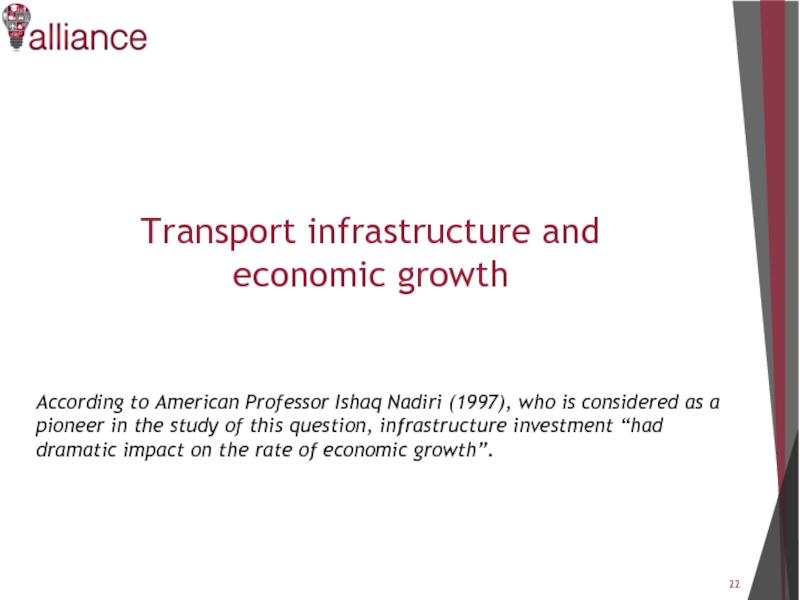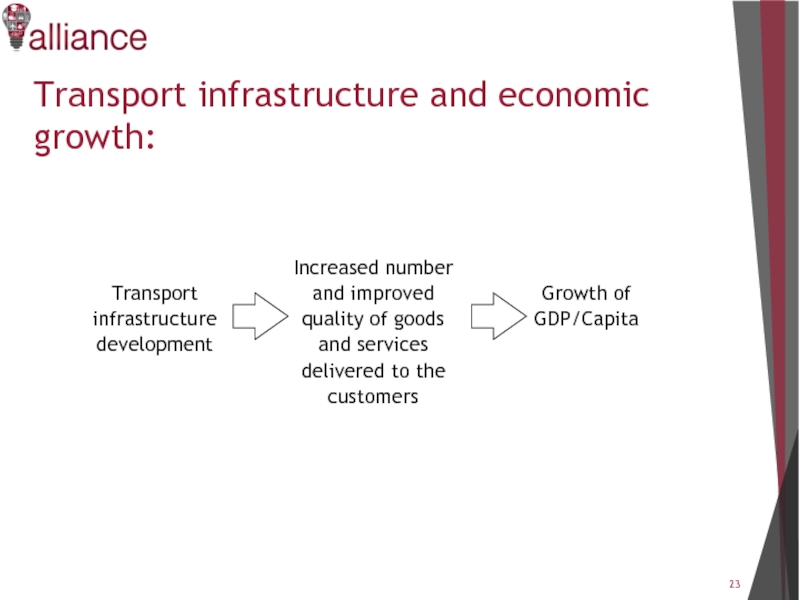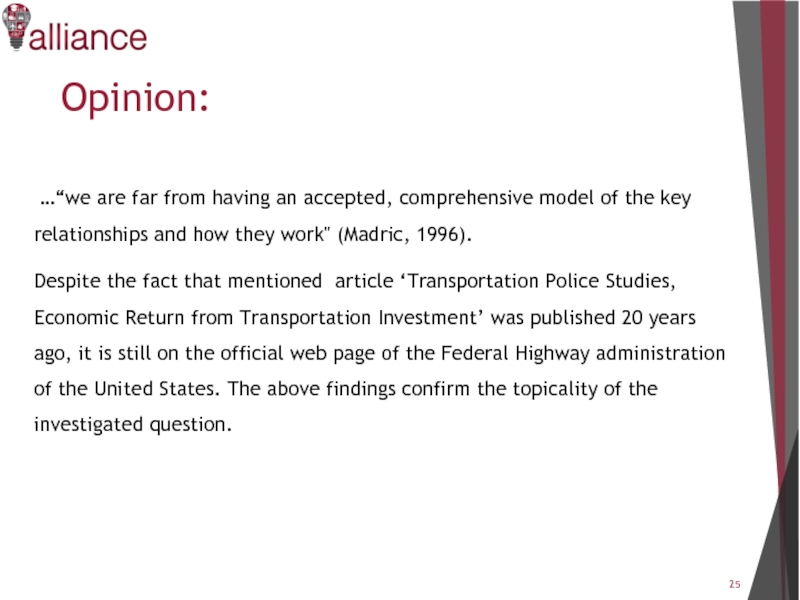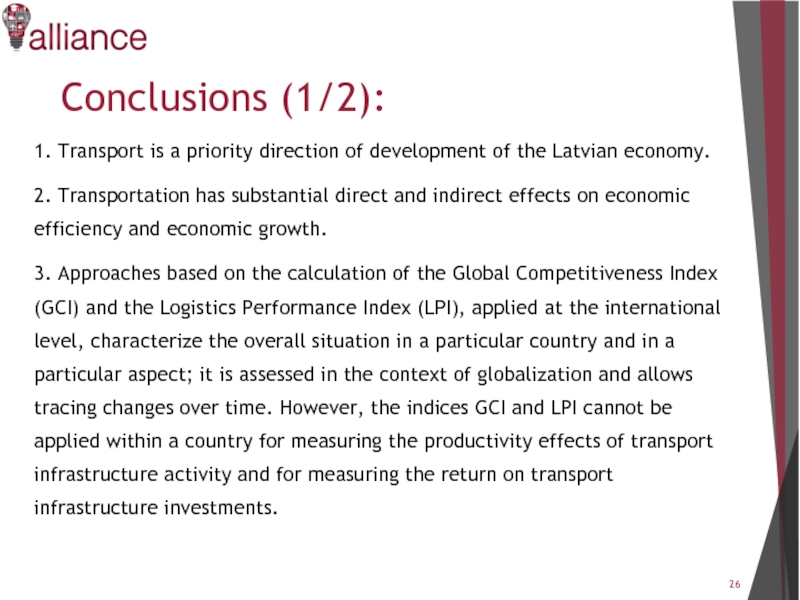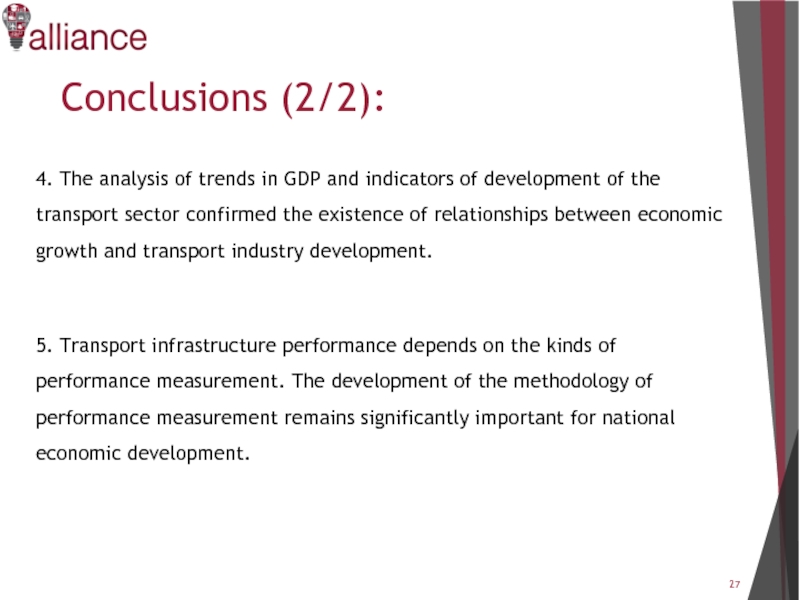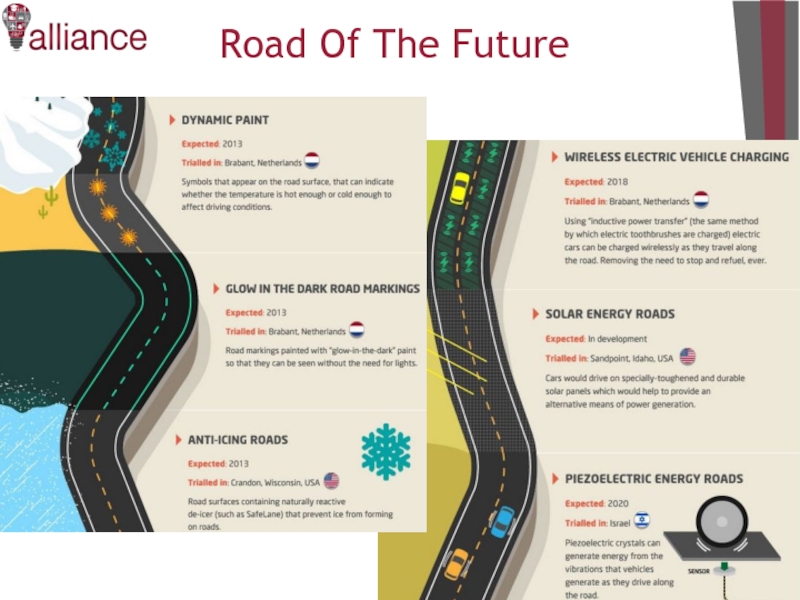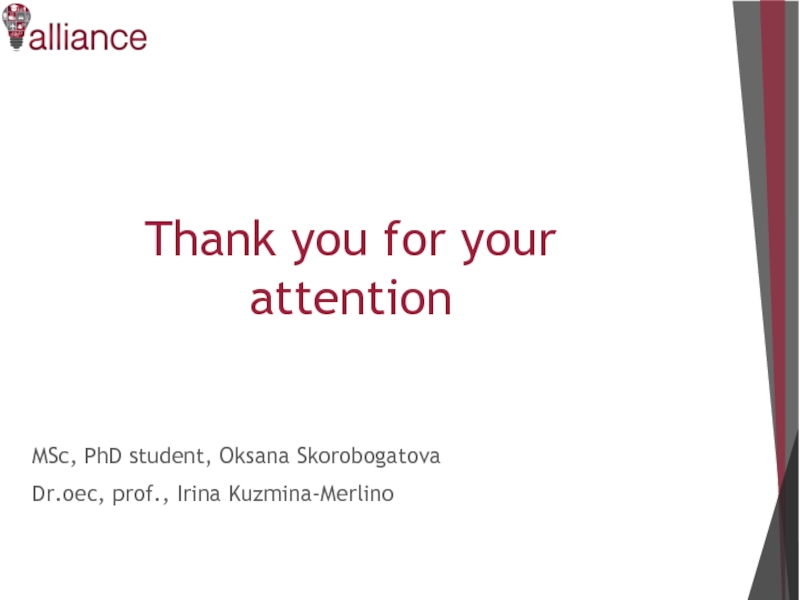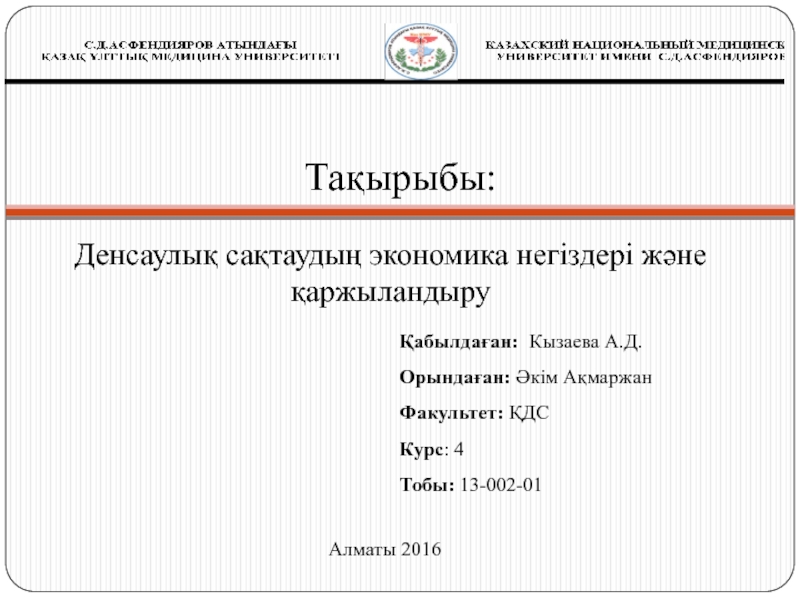Kuzmina-Merlino
Transport and Telecommunications Institut, Latvia
- Главная
- Разное
- Дизайн
- Бизнес и предпринимательство
- Аналитика
- Образование
- Развлечения
- Красота и здоровье
- Финансы
- Государство
- Путешествия
- Спорт
- Недвижимость
- Армия
- Графика
- Культурология
- Еда и кулинария
- Лингвистика
- Английский язык
- Астрономия
- Алгебра
- Биология
- География
- Детские презентации
- Информатика
- История
- Литература
- Маркетинг
- Математика
- Медицина
- Менеджмент
- Музыка
- МХК
- Немецкий язык
- ОБЖ
- Обществознание
- Окружающий мир
- Педагогика
- Русский язык
- Технология
- Физика
- Философия
- Химия
- Шаблоны, картинки для презентаций
- Экология
- Экономика
- Юриспруденция
Transport infrastructure development performance презентация
Содержание
- 1. Transport infrastructure development performance
- 2. Outline The role of transport infrastructure
- 3. Background: Source: cdn.dupress.com Next Generation Urban Transport Systems
- 4. The goal & objectives to examine
- 5. Opinion: “a certain type of capital
- 6. The place of transport infrastructure in the transport system
- 7. Stylized diagram of the transport system
- 8. Latvian transport infrastructure
- 9. Transport & logistics Source: cdn.dupress.com
- 10. The main elements of the Latvian transport
- 11. Priority plans of development of Latvian transport infrastructure
- 12. Special development perspectives: Source: Saeima 2010, page 101
- 13. Transport infrastructure development performance
- 14. The Global Competitiveness Index The Global
- 15. The best transport infrastructure: assesses roads, railroads,
- 16. The Global Competitiveness Index 2014–2015: Infrastructure: Source: Schwab, 2015
- 17. Calculation of the GCI: institutions, infrastructure
- 18. The Global Competitiveness Index of Latvia in
- 19. Logistics Performance Index The Logistics Performance
- 20. Calculation of the LPI: efficiency of the
- 21. Scores of Latvia in different components in
- 22. Transport infrastructure and economic growth
- 23. Transport infrastructure and economic growth:
- 24. Transport trends against GDP: Latvia 2006-2014:
- 25. Opinion: …“we are far from
- 26. Conclusions (1/2): 1. Transport is a priority
- 27. Conclusions (2/2): 4. The analysis of trends
- 28. The road of the future
- 29. 29 Road Of The Future
- 30. Thank you for your attention MSc,
Слайд 1TRANSPORT INFRASTRUCTURE DEVELOPMENT PERFORMANCE
MSc, PhD student, Oksana Skorobogatova
Dr.oec, prof., Irina
Слайд 2Outline
The role of transport infrastructure in the transport system;
Latvian transport infrastructure;
Priority plans of development of Latvian transport infrastructure;
Transport infrastructure development performance;
The Global Competitiveness Index of Latvia;
Logistics Performance Index of Latvia;
Transport infrastructure and economic growth;
Transport in an “ new era of change” – the road of the future
Слайд 4The goal & objectives
to examine existing approaches of performance measurement of
transportation industry activity, especially for transport infrastructure, basing both on the analysis of the scientific and academic publications, and on the official publications of internationally recognized professional institutions working on the subject of the study.
To achieve the goal of the research, the following objectives have been stated:
to describe the role of transport infrastructure in the economy of Latvia;
to determine is there an appropriate methodology to measure the development performance of the transportation industry, especially transport infrastructure;
to identify are there any general indicators of transport infrastructure and economic growth that could be implemented systematically.
To achieve the goal of the research, the following objectives have been stated:
to describe the role of transport infrastructure in the economy of Latvia;
to determine is there an appropriate methodology to measure the development performance of the transportation industry, especially transport infrastructure;
to identify are there any general indicators of transport infrastructure and economic growth that could be implemented systematically.
Слайд 5Opinion:
“a certain type of capital demonstrating the specific social character, manifested
in transport infrastructure ability to bring to the region the benefits with not only economic, but also with socio-cultural characteristics, and conditioning the synergistic effect of its implementation”
(Rudneva and Kudryavtsev, 2013).
(Rudneva and Kudryavtsev, 2013).
Слайд 7Stylized diagram of the transport system
(adapted by Ministry of transport
of the New Zealand in 2014 from Lakshmanan and Anderson, 2002)
Слайд 10The main elements of the Latvian transport infrastructure comprise:
• Riga international airport;
• Free
port of Riga and other ports in Ventspils and in Liepaja;
• Railway transport;
• 33 international coach terminals;
• City public transport;
• Dense and functional networks of roads which are connected with the EU
and CIS networks and Latvian ports;
• Special high-capacity railway corridor that connects Latvian ports with
Russia and the Far East.
• Railway transport;
• 33 international coach terminals;
• City public transport;
• Dense and functional networks of roads which are connected with the EU
and CIS networks and Latvian ports;
• Special high-capacity railway corridor that connects Latvian ports with
Russia and the Far East.
Слайд 14The Global Competitiveness Index
The Global Competitiveness Index (GCI) measures the
level of competitiveness of an economy, which is defined as the set of institutions, policies, and factors that determine the level of productivity of an economy. Measurement of the level of transport infrastructure is one of the parts of total evaluation of the GCI.
Слайд 15The best transport infrastructure:
assesses roads, railroads, ports and air transport, as
well as the airline seat kilometers available per week
Score: 1 = extremely underdeveloped—among the worst in the world;
7 = extensive and efficient—among the best in the world
Score: 1 = extremely underdeveloped—among the worst in the world;
7 = extensive and efficient—among the best in the world
Слайд 17Calculation of the GCI:
institutions,
infrastructure (including transport infrastructure),
macroeconomic environment,
health
and primary education,
higher education and training,
goods market efficiency,
labour market efficiency,
financial market development,
technological readiness,
market size,
business sophistication,
innovation
higher education and training,
goods market efficiency,
labour market efficiency,
financial market development,
technological readiness,
market size,
business sophistication,
innovation
Слайд 18The Global Competitiveness Index of Latvia in detail:
Source: Schwab, 2015
Value: 1
= extremely underdeveloped—among the worst in the world;
7 = extensive and efficient—among the best in the world
7 = extensive and efficient—among the best in the world
Слайд 19Logistics Performance Index
The Logistics Performance Index (LPI) analyses differences between
countries in terms of customs procedures, logistics costs and the quality of the infrastructure for overland and maritime transport.
Слайд 20Calculation of the LPI:
efficiency of the clearance process by customs and
other border agencies;
quality of transport infrastructure and information technology;
ease and affordability of arranging international shipments;
competence and quality of logistics services;
ability to track and trace international shipments;
timeliness of shipments in reaching destination
quality of transport infrastructure and information technology;
ease and affordability of arranging international shipments;
competence and quality of logistics services;
ability to track and trace international shipments;
timeliness of shipments in reaching destination
Слайд 21Scores of Latvia in different components in the Logistic Performance index
2007-2016:
(developed by the authors based on the World Bank data)
Слайд 22Transport infrastructure and economic growth
According to American Professor Ishaq Nadiri
(1997), who is considered as a pioneer in the study of this question, infrastructure investment “had dramatic impact on the rate of economic growth”.
Слайд 24Transport trends against GDP:
Latvia 2006-2014:
(developed using methodology of SACTRA, Source:
Central Statistical Bureau of Latvia)
Слайд 25Opinion:
…“we are far from having an accepted, comprehensive model of
the key relationships and how they work" (Madric, 1996).
Despite the fact that mentioned article ‘Transportation Police Studies, Economic Return from Transportation Investment’ was published 20 years ago, it is still on the official web page of the Federal Highway administration of the United States. The above findings confirm the topicality of the investigated question.
Despite the fact that mentioned article ‘Transportation Police Studies, Economic Return from Transportation Investment’ was published 20 years ago, it is still on the official web page of the Federal Highway administration of the United States. The above findings confirm the topicality of the investigated question.
Слайд 26Conclusions (1/2):
1. Transport is a priority direction of development of the
Latvian economy.
2. Transportation has substantial direct and indirect effects on economic efficiency and economic growth.
3. Approaches based on the calculation of the Global Competitiveness Index (GCI) and the Logistics Performance Index (LPI), applied at the international level, characterize the overall situation in a particular country and in a particular aspect; it is assessed in the context of globalization and allows tracing changes over time. However, the indices GCI and LPI cannot be applied within a country for measuring the productivity effects of transport infrastructure activity and for measuring the return on transport infrastructure investments.
2. Transportation has substantial direct and indirect effects on economic efficiency and economic growth.
3. Approaches based on the calculation of the Global Competitiveness Index (GCI) and the Logistics Performance Index (LPI), applied at the international level, characterize the overall situation in a particular country and in a particular aspect; it is assessed in the context of globalization and allows tracing changes over time. However, the indices GCI and LPI cannot be applied within a country for measuring the productivity effects of transport infrastructure activity and for measuring the return on transport infrastructure investments.
Слайд 27Conclusions (2/2):
4. The analysis of trends in GDP and indicators of
development of the transport sector confirmed the existence of relationships between economic growth and transport industry development.
5. Transport infrastructure performance depends on the kinds of performance measurement. The development of the methodology of performance measurement remains significantly important for national economic development.
5. Transport infrastructure performance depends on the kinds of performance measurement. The development of the methodology of performance measurement remains significantly important for national economic development.
Слайд 30Thank you for your
attention
MSc, PhD student, Oksana Skorobogatova
Dr.oec, prof.,
Irina Kuzmina-Merlino
